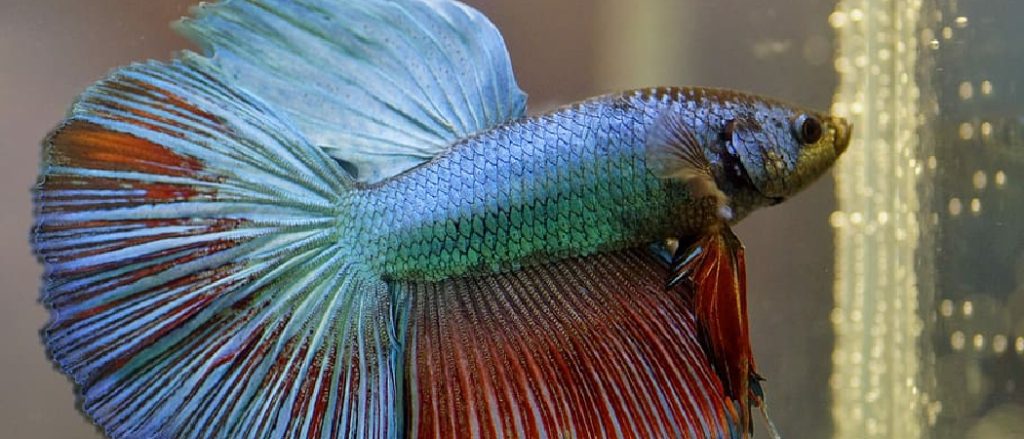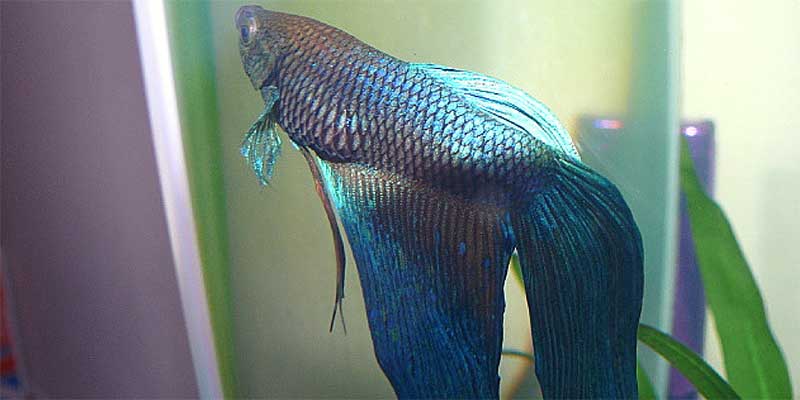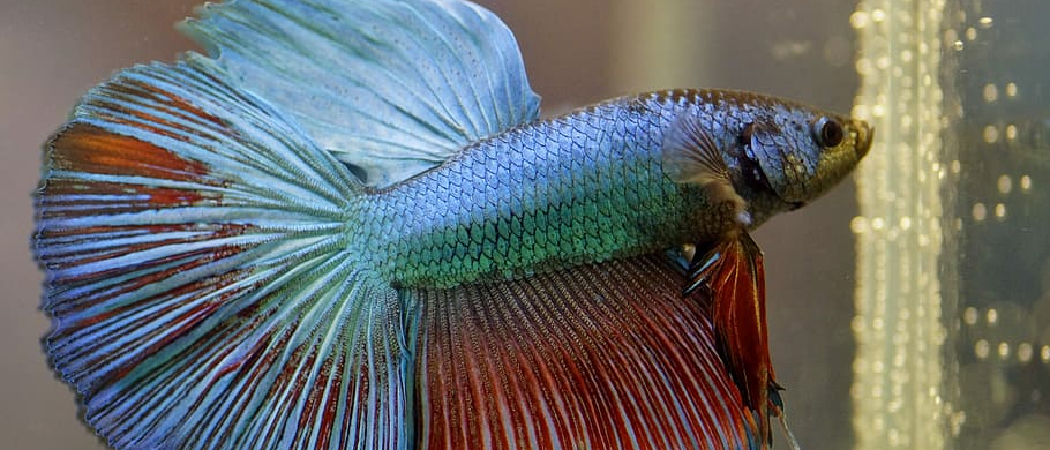To cure swim bladder in bettas, adjust their diet and maintain proper water conditions. Swim bladder disorder is a common health issue in betta fish, with symptoms including floating or sinking, and difficulty swimming upright.

This condition can be caused by overfeeding, constipation, or poor water quality. By feeding them small, frequent meals of high-quality, easily digestible food such as daphnia or brine shrimp, and ensuring their water is clean and properly heated, you can help alleviate swim bladder problems in bettas.
Regular water changes and maintaining a consistent temperature will also aid in their recovery. Observation and timely treatment can help your betta regain their health and swim normally again.

Credit: bettafish.org
Understanding Swim Bladder Disease
Swim bladder disease in betta fish can be cured by adjusting their diet, water temperature, and adding aquarium salt. Proper understanding and treatment can help the fish recover and regain its ability to swim upright.
Understanding Swim Bladder Disease Swim bladder disease is a common ailment that affects betta fish, causing them to have difficulty swimming and maintaining their balance in the water. This condition, also known as swim bladder disorder or swim bladder infection, occurs when the swim bladder, an organ responsible for controlling buoyancy, becomes compromised. If you own a betta fish and notice it having trouble swimming or floating sideways, it might be suffering from swim bladder disease. In this article, we will delve into the causes, symptoms, and effective ways to cure swim bladder disease in bettas.
What Is Swim Bladder Disease?
Swim bladder disease, also referred to as swim bladder disorder, is a common condition affecting betta fish. The swim bladder is an organ located in the abdominal cavity of fish that helps them control their buoyancy and swim at different depths. When the swim bladder becomes compromised due to infection, injury, or other factors, it can lead to swim bladder disease. This disorder affects the betta’s ability to swim and maintain its balance in the water, causing it to struggle or float sideways.
Causes Of Swim Bladder Disease
Swim bladder disease can be caused by various factors, including:
- Diet: Poor nutrition, overfeeding, or consuming inappropriate food can result in swim bladder disorder. Excessive intake of dry or freeze-dried foods that expand in the stomach can lead to bloating and put pressure on the swim bladder.
- Constipation: When a betta fish is constipated, it can put pressure on the swim bladder, leading to swim bladder disease. Constipation can be caused by feeding a diet high in indigestible substances or overfeeding.
- Infection: Bacterial or parasitic infections can affect the swim bladder, causing inflammation and impairing its function. Poor water quality, stress, or overcrowded conditions can increase the risk of infection and swim bladder disease.
- Injury: Injuries to the swim bladder, such as from a fall, aggressive behavior, or rough handling, can lead to swim bladder disease. Trauma to the swim bladder can disrupt its normal function and cause swimming difficulties in betta fish.
Symptoms Of Swim Bladder Disease
Identifying the symptoms of swim bladder disease is crucial for prompt treatment. Common symptoms include:
- Difficulty swimming: Bettas with swim bladder disease often struggle to swim properly. They may swim erratically, have trouble staying upright, or float to the water surface.
- Loss of balance: Betta fish suffering from swim bladder disease may have difficulty maintaining their balance, causing them to tilt or float sideways.
- Resting at the bottom: Due to the swimming difficulties, bettas may spend more time resting at the bottom of the tank or on plants and decorations.
- Appetite changes: Swim bladder disease can affect a betta’s appetite. Some fish may lose their appetite, while others may continue to eat but struggle to swim or remain buoyant.
- Bloating: A bloated appearance is common in bettas with swim bladder disease. The abdomen may appear swollen due to digestive or swim bladder issues.
- Darting or lethargy: Sick bettas may display darting movements or lethargy. They may try to adjust their position by diving or darting around the tank.
Understanding the causes and symptoms of swim bladder disease is the first step toward effectively treating and curing this condition in betta fish. By addressing the underlying causes and providing proper care, you can help your betta regain its ability to swim and live a healthy, active life.
Treating Swim Bladder Disease
Before you can effectively treat swim bladder disease in your betta fish, it is important to properly diagnose the issue. There are several symptoms to look out for which may indicate swim bladder disease. These include:
- Difficulty swimming, such as swimming upright or on their side
- Loss of appetite
- Weight loss
- Lethargy
- Bloating
If you notice your betta fish exhibiting these symptoms, it is highly likely that they are suffering from swim bladder disease. However, it is essential to consult a veterinarian to confirm the diagnosis and rule out any other underlying health conditions.
In many cases, swim bladder disease can be treated through conservative methods. These methods aim to alleviate stress and create an optimal environment for your betta fish to recover. Here are some conservative treatment options to consider:
- Improve water quality: Ensure that the water in your betta fish’s tank is clean and properly filtered. Regular water changes can help maintain optimal water quality.
- Temperature control: Keep the water temperature in your betta fish’s tank between 78°F and 80°F. Fluctuations in temperature can contribute to swim bladder issues.
- Diet adjustment: Overfeeding or feeding your betta fish a diet high in processed foods can lead to swim bladder problems. Switching to a high-quality, balanced diet can help alleviate the issue.
- Lighting: Provide your betta fish with a consistent light-dark cycle by ensuring they receive 8-12 hours of darkness daily. This can help regulate their internal clock and reduce stress.
If conservative treatment options do not yield satisfactory results, it may be necessary to explore medications and remedies to treat swim bladder disease. Here are some additional options to consider:
- Epsom salt baths: By adding a small amount of Epsom salt to a separate tank or container, you can create a bath for your betta fish to help relieve bloating and promote bowel movements.
- Antibiotics: In cases where swim bladder disease is caused by a bacterial infection, your veterinarian may prescribe antibiotics to help clear the infection.
- Anti-inflammatory medications: Inflammation of the swim bladder can lead to swim bladder disease. Depending on the severity of the inflammation, your veterinarian may recommend anti-inflammatory medications to reduce swelling.
It is important to follow the guidance of a veterinarian when administering medications or remedies to ensure the well-being of your betta fish. Additionally, maintaining a clean and stress-free environment for your fish throughout the treatment process can greatly contribute to their recovery.
Preventing Swim Bladder Disease
Swim bladder disease is a common issue that affects betta fish, causing them to struggle with buoyancy and have difficulty swimming properly. While treating swim bladder disease is possible, it is always better to prevent it from occurring in the first place. By maintaining proper water conditions, following appropriate feeding practices, and preventing stress and injury, you can significantly reduce the risk of your betta developing swim bladder disease.
Maintaining Proper Water Conditions
The quality of the water in your betta’s tank plays a crucial role in preventing swim bladder disease. Here are some steps you can take to ensure that the water conditions are optimal:
- Regularly test the water parameters such as temperature, pH level, ammonia, nitrite, and nitrate levels.
- Keep the water temperature between 75°F and 80°F, as bettas are tropical fish that thrive in warmer water.
- Ensure that the pH level of the water is around 7, as anything outside the suitable pH range can cause stress to your betta.
- Perform regular water changes to maintain water cleanliness, removing any excess waste or uneaten food particles.
- Consider adding a water conditioner to remove chlorine and other harmful chemicals from tap water before adding it to the tank.
Feeding Practices
The diet of your betta fish plays a vital role in preventing swim bladder disease. Here are some feeding practices you should follow:
- Feed your betta a varied diet of high-quality betta pellets, live or frozen foods such as bloodworms, daphnia, or brine shrimp.
- Avoid overfeeding your betta, as excessive food can lead to constipation, a common cause of swim bladder disease.
- Offer small portions of food multiple times a day, rather than a large amount in a single feeding.
- Soak dried foods in water for a few minutes before feeding to prevent them from expanding in your betta’s stomach.
- Monitor your betta’s eating habits and adjust the feeding amount accordingly to avoid any overeating or undernourishment.
Preventing Stress And Injury
Stress and injury can weaken your betta’s immune system, making them more susceptible to swim bladder disease. Take the following steps to prevent stress and injury:
- Avoid overcrowding the tank and provide ample hiding places and plants to create a secure environment for your betta.
- Ensure that the tank size is appropriate, allowing sufficient swimming space for your betta.
- Handle your betta with care and avoid sudden movements that can startle or injure them.
- Avoid placing the tank in a high traffic area or near noisy objects that can stress your betta.
- Regularly inspect the tank for any sharp edges, objects, or debris that could potentially harm your betta.
By taking these preventive measures, you can significantly reduce the risk of swim bladder disease in your betta fish. Remember, a healthy and happy betta is more likely to thrive and showcase its vibrant colors and energetic personality.
Credit: www.quora.com

Credit: www.youtube.com
Frequently Asked Questions Of How To Cure Swim Bladder In Betta
How Do You Treat Swim Bladder Disorder In Betta Fish?
To treat swim bladder disorder in betta fish, first, isolate the affected fish in a separate tank. Offer small, easily digestible meals. Adjust the water temperature to around 78-80°F. Try not to overfeed and consider adding a few drops of aquarium salt to the water.
Can A Fish Recover From Swim Bladder?
Yes, fish can recover from swim bladder, but it depends on the severity of the condition and proper care provided.
How Do You Heal A Fish From A Swim Bladder?
To heal a fish with swim bladder disorder, try fasting the fish for a few days, then gradually reintroduce small amounts of food. Feed the fish a high-fiber diet and provide a stress-free environment with proper water conditions. Consulting a veterinarian is also recommended for further assistance.
Can You Fix A Fish Swim Bladder?
Yes, it is possible to fix a fish swim bladder through various treatments and adjustments.
Conclusion
Curing swim bladder in betta fish requires a comprehensive approach that includes proper feeding, maintaining water quality, and providing a stress-free environment. By addressing these factors, you can greatly improve the overall health and well-being of your betta. Remember to observe your fish closely and make necessary adjustments to their care routine.
With patience and diligence, you can help your betta overcome swim bladder issues and enjoy a happy and active life.

